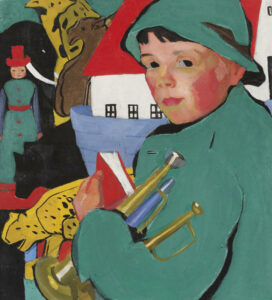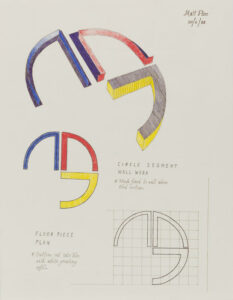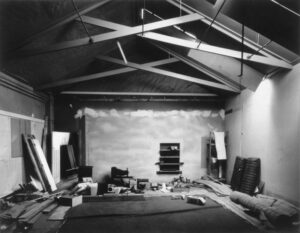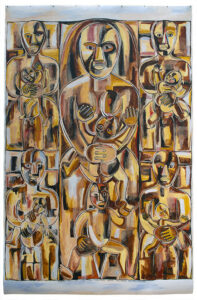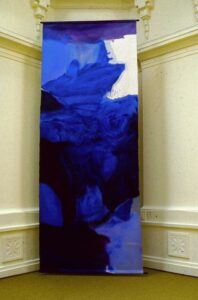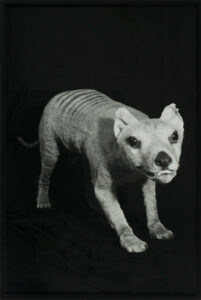MY CHOICE: Anique Jayasinghe / November 2022
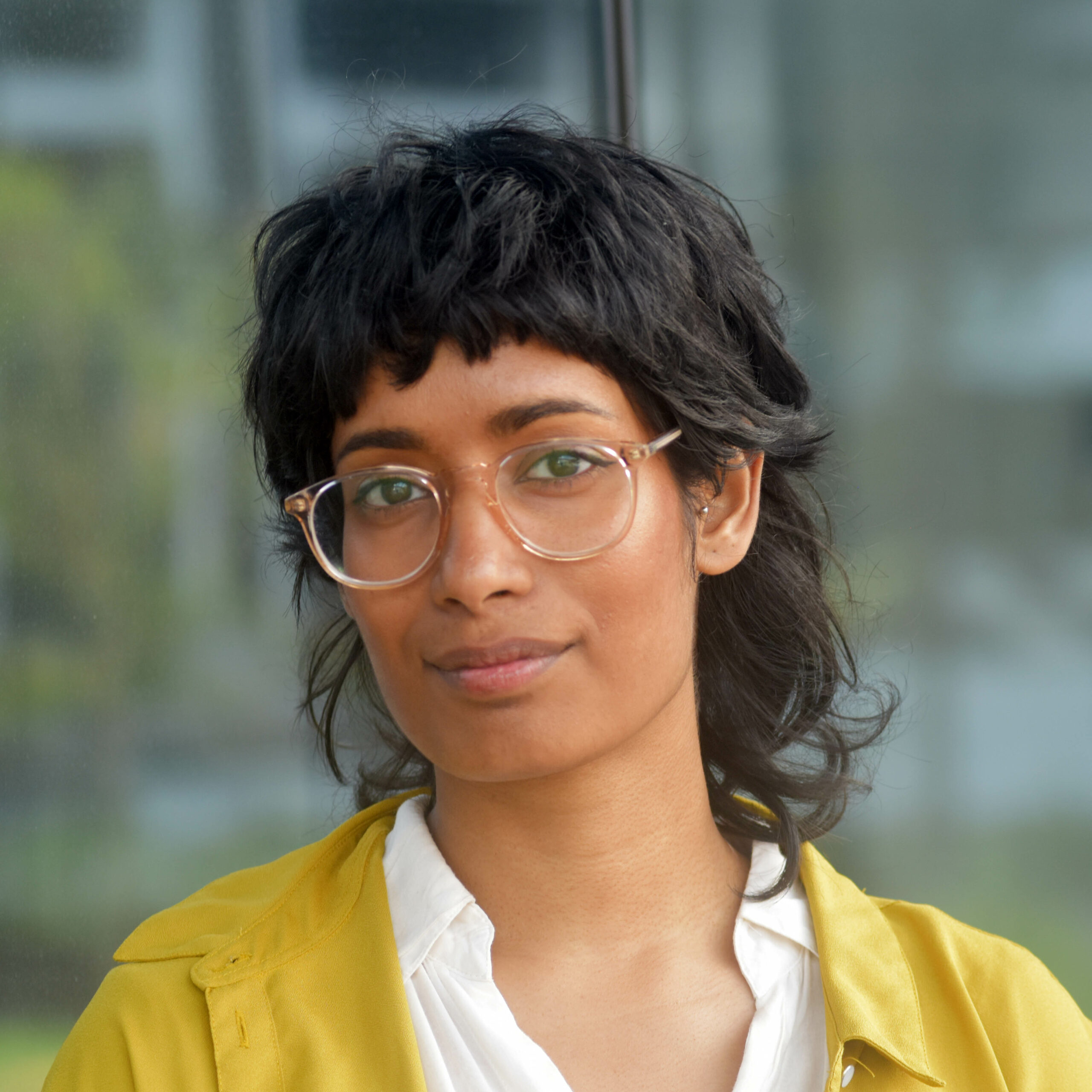

November 2022: Anique Jayasinghe
Each month a member of our community is invited to browse our online collection and select six of their favourite artworks. Each My Choice selection, together with personal responses to the works, will be available to view on the Sarjeant Gallery website for one month at a time. The November 2022 My Choice has been selected by Anique Jayasinghe and is available to view until 30 November, 2022.
Anique works as the Creative Community Advisor at Whanganui District Council where she connects local artists and community groups with resources to help them realise their creative endeavours. A previous gallery assistant, and graduate of both Art History (University of Auckland) and Museum and Heritage Studies (Victoria University of Wellington), she has an interest in the intersections between art and public, with a focus on access and inclusion.
See Anique’s selections below:
Edith Collier, Boy with Noah’s Ark, 1916-1917 (2/3)
“This playful piece with the roguish over-the-shoulder look and vibrant colours shows a different energy to Collier’s usual pensive works. The boy’s turned back indicates an inner world that we, the grown-ups, only glimpse. And I can almost hear the clamour of plastic and wood as he bundles the prized toys with a protective and proud look. It so reminds me of my doted childhood toys; the hot pink 90s Polly Pocket with the water feature attached, and the delicate Sylvanian Family figurines.”
Matt Pine, Untitled, 1988 (1996/8/27)
“I had the privilege of working with Matt to coordinate the re-installment of his sculpture, Cone Piece, at the Whanganui War Memorial last year. He was meticulous with a distinct vision which is portrayed perfectly with this drawing. Alongside his ingenious use of simple shape and line to manipulate space, Matt’s unyielding nature is what made him a great artist in many ways.”
Richard Wotton, Former F.J. Denton Photography Studio, 128 Victoria Avenue, Wanganui 1988, 1988 (1999/30/1)
“Wotton’s interiors always have an uncanny way of building presence through absence. What is in the frame (wooden beams, doors and the remains of photographic gear), hints at what was. Mirroring this time warp, Wotton’s image of Frank Denton’s delipidated photographic studio points to lengthy chronology of Whanganui photographers.”
Robyn Kahukiwa, He Toa Takitahi (He whakatauāki: Ehara tāku toa i te toa takitahi, engari takimano, nō āku tīpuna) – (My strength is not individual it is collective), 1985 (1985/26/1)
“Kahukiwa’s visual translation of this whakataukī may be seen as relating to family and parenthood, but to me it shows the shift from blind individualism towards the power of the collective (past, present and future) in healing and strengthening communities. Wahine Toa, her collaborative picture book with author; Patricia Grace, remains one of my most prized possessions.”
Gretchen Albrecht, Seajourneys (Tristan & Iseult Panels) No. 2, 1978 (1980/12/2)
“Some artworks take time to love, but with others it’s instantaneous. Albrecht’s works have always been in the latter category for me. Her masterful use of colour to create expansive compositions is mesmeric and it’s no different with this piece. A finely balanced contradiction of soft fluidity and turbulent waters. An inviting, yet ominous, portal within the Sarjeant’s austere neo-classical façade. I’d dive right in.”
Andrea du Chatenier, A portion from the installation “Ghost Train” (Tasmanian tiger), 2004 (2005/1/2)
“This was a surprising find in the Sarjeant’s collection as I’ve only ever known Andrea for her charismatic and crunchy ceramics. It’s interesting to reconcile the fun glazing experimentations in her ceramics with the interactive work that is Ghost Train, which provokes experimentations of a grislier nature. The inclusion of the taxidermized Tasmanian Tiger housed at the Whanganui Regional Museum melds visual arts and museology brilliantly and prompts questions into how we preserve nature, for whom, and for what reason.”
Category
Past Exhibitions 2022




